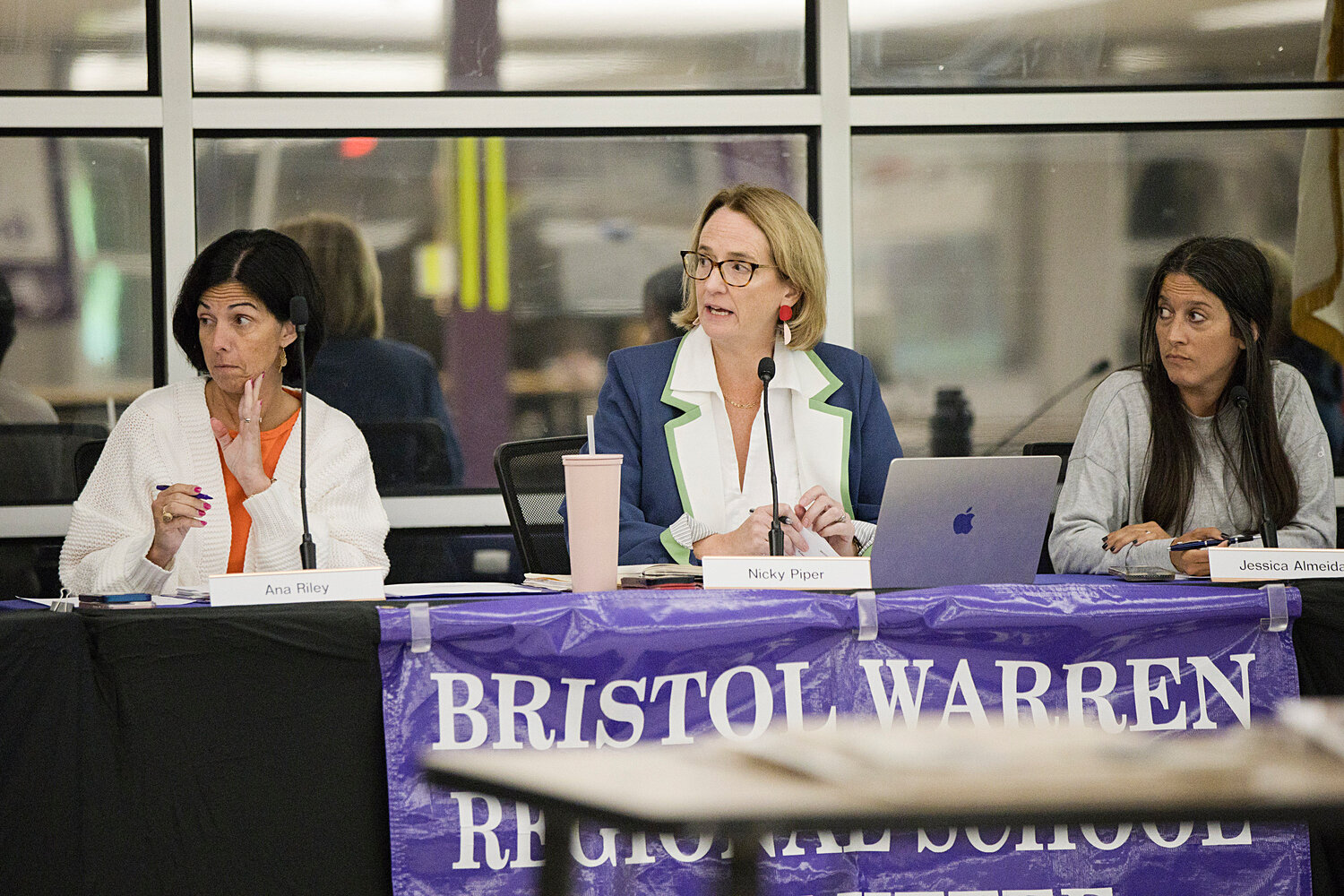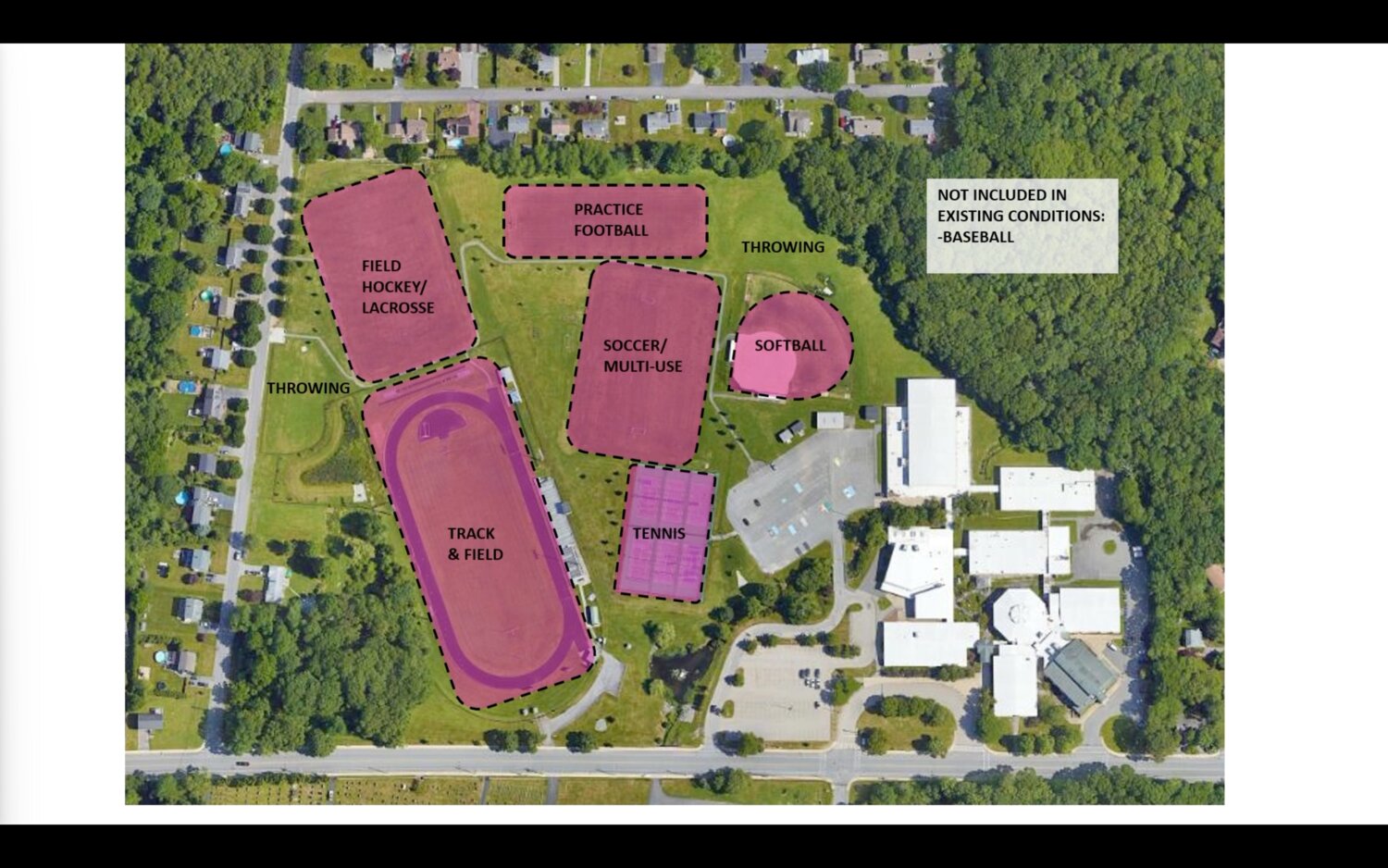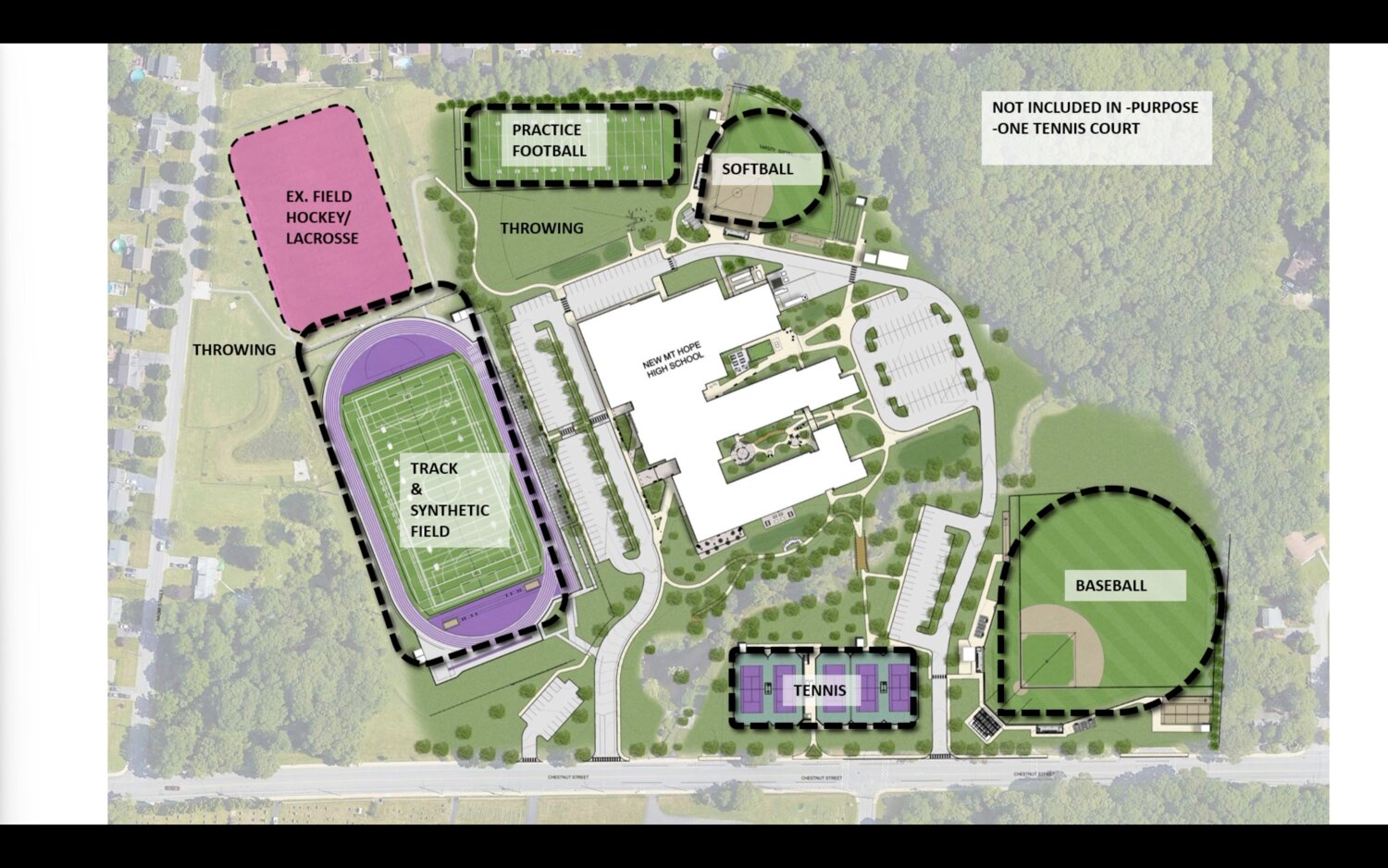- THURSDAY, SEPTEMBER 26, 2024
New Mt. Hope design faces a turf war
School district favors artificial turf, while Bristol planners believe grass is the better option
Will the new Mt. Hope High School utilize synthetic turf or natural grass for its biggest, multi-purpose athletic field? Ultimately, it’s not up to school officials or their project management …
This item is available in full to subscribers.
Please log in to continue |
Register to post eventsIf you'd like to post an event to our calendar, you can create a free account by clicking here. Note that free accounts do not have access to our subscriber-only content. |
Day pass subscribers
Are you a day pass subscriber who needs to log in? Click here to continue.
New Mt. Hope design faces a turf war
School district favors artificial turf, while Bristol planners believe grass is the better option
Will the new Mt. Hope High School utilize synthetic turf or natural grass for its biggest, multi-purpose athletic field? Ultimately, it’s not up to school officials or their project management team to decide.
Following a less than enthusiastic reception and unanimous continuance to next month from the Bristol Planning Board during the district’s initial meeting seeking Master Plan approval for the new school project, project engineers, landscape architects and Town officials from both Bristol and Warren met to debrief and discuss their options during a meeting of the School Building Committee on Thursday, Sept. 19.
That plan, as presented to the planning board, includes the use of synthetic turf for the multi-purpose field that would go in the middle of the new, full-size, 400-meter standard track. But the planning board took multiple issues with that plan, including concerns about safety to student athletes and the environmental side effects that synthetic turf can have on the surrounding Silver Creek watershed.
But primarily, the board was most concerned with the potential negative ecological impact associated with adding roughly two acres of impervious surface to an area that is already notorious for drainage and flooding issues.
“Right now my concern, and I think everybody’s concern, is drainage,” said School Committee Vice Chair, Adam McGovern. “Our biggest risk, in my opinion, for this project right now is how we control the water on the site, treat it, and responsibly get it off. And it sounds like there are concerns with turf.”
In an attempt to allay the concerns regarding synthetic turf, and prepare for their second appearance before the Bristol Planning Board, the district asked Justin Robertshaw, Senior Associate and the Director of Sports Design for Traverse Landscape Architects, to go through a presentation on the pros and cons of synthetic turf. However, Robertshaw made it clear that he wasn’t pushing for a specific course of action.
“I am not a salesman for synthetic turf. I am not going to advocate for synthetic turf. I’m happy to design both natural grass and synthetic turf…What we’re really here to do today is to give you what we believe is the most factually accurate information out there to help you make decisions regarding your athletic fields for the district,” he said. “There’s a lot of misinterpreted data out there…”
Grass vs. Turf – price
Robertshaw broke his analysis down into a few key categories regarding the pros and cons of natural grass playing fields versus synthetic turf — such as the short-term and long-term costs, burden of maintenance, variability of use, environmental impact, and the safety of student athletes.
In terms of price, grass fields generally have a lower cost of installation versus synthetic turf (between $300,000 to $800,000 for grass fields depending on the configuration, and between $1.2 to $1.6 million for synthetic turf. But grass fields require between $35,000 to $55,000 in maintenance each year compared to only around $16,500 a year for synthetic turf.
However, when it comes to variability and length of life, synthetic turf is pretty unparalleled, lasting as many as 3,000 hours of use prior to needing to be resurfaced. As opposed to natural grass, which needs to rest after a prolonged season of use (between 550-850 hours) to regenerate, turf can be used year-round, and only the surface layer needs to be refinished after about 12 years of use, Robertshaw said. That cost comes at an average cost of around $700,000 to $800,000, which Robertshaw said should be factored into the district’s operating budget so it doesn’t face a huge expense when the time for replacement comes.
Of course, there is an additional cost for removing and recycling the used synthetic surface at the end of its life too — something that never needs to occur with natural grass that is properly maintained.
Some in attendance at the meeting were particularly adamant about the benefits of having a turf field that can be used by a wide variety of sports, and other recreational activities, throughout the entire year.
“I see the need for a turf field in this district. There’s very few districts and towns that don’t have a turf field since everyone is kind of going this way,” said Matt Cabral, Building Official for the Town of Warren. “I’m also a football official and I’ve officiated on many of these fields in the state. There’s many benefits, and one of the places you might want to reach out to is Cranston, because they have someone on that field all the time and they’re making a ton of money back.”
Grass vs. Turf – environment
A lengthy discussion about the pros and cons regarding both natural grass and synthetic turf proved that an argument could be made for either side regarding which one is technically “better” for the health of the surrounding environment.
For example, synthetic turf is a petroleum-based product that has long been associated with the introduction of non-biodegradable PFAs (so-called “forever chemicals” with a growing reputation for causing a variety of health concerns in wildlife and humans) into surrounding watersheds. However, that concern can be mitigated by using new types of organic infills — the rubber pellets that were popular when synthetic turf first became more widespread in the early 2000s and 2010s is no longer the only game in town.
“Communities have already banned PFAs, and they have within the last two years made strides to the point where there are PFAs-free synthetic turfs and enough of them to get a competitive bid scenario,” Robertshaw said. “While it is an environmental concern, it is one that can be, and has been, mitigated.”
On the flip side, while natural grass is (of course) more natural, it requires fertilization — the number one contributor of PFAs in American soil — and vast amounts of irrigation to keep the surface healthy; something to keep in mind if drainage and potential flooding is a concern. And on the other side, synthetic turf fields radiate heat and contribute to the urban heat island effect, similar to a parking lot.
Robertshaw said that the installation of a synthetic field would require the construction of a comprehensive water containment and management system underneath the surface to ensure that excessive water runoff and contamination does not occur as a result.
Grass vs. Turf – safety
Changing gears to the voluminous amount of studies that have been conducted on the potential increased likelihood of injury to athletes on synthetic turf versus natural grass, Robertshaw made the point that such data should be taken with a large grain of salt.
“There are a lot of studies out there but a lot of the studies are still really inconclusive. We’re drawing on information ranging from the 1970s up until about 2020. Synthetic turf has taken some major evolutions in that time, and so has natural grass,” he said. “There is a lot more research happening now based on what they’re learning that will tell us more in the future on this topic.”
Robertshaw cited a 2022 systematic review from the American Journal of Sports Medicine, which looked at 53 studies from 1972 to 2020 on the safety implications of synthetic turf versus natural grass.
The review found that over half of the studies (54%) reported no difference in the amount of injuries based on the playing surface; 36% reported synthetic turf led to more injuries; and 10% reported natural grass led to more injuries.
In addition to the inconclusiveness of the overall scientific conclusions found within them, each of those studies were examining different generations of turf, or grass fields in different environments with different levels of maintenance, and most were examining professional or collegiate athletes that play at a much more intense level than high school teams. Things like the sport being played, the footwear used, and even the types of injuries, are not consistent among the studies either.
“Not to say that [the results] couldn’t be the same, it’s just a limited data set,” Robertshaw said.
Will the planning board be swayed?
The district will have until Oct. 10 to prepare their updated argument to present to the Bristol Planning Board. But according to Diane Williamson, Bristol’s Director of Community Development, who attended the building committee meeting, the prevailing attitude from the planning board seemed unlikely to change even with the presentation they had just been given.
“I think they’re going to try to keep an open mind but that meeting a week, two weeks ago, I didn’t see anybody in the room who supported the use of synthetic turf,” she said, later adding that the concerns over drainage of the site was their primary concern. “I thought your presentation was good but I didn’t see anything in there that would change their minds.”
Superintendent Ana Riley said that no plans had been finalized in terms of which field they would go with, so depending on what the Planning Board said, they could move forward as directed.
“We have one shot to convince them that we’re going to manage the drainage…We don’t have time to delay,” she said. “If it’s a rejection based solely on that, then we move on with natural grass and keep going.”
Other items that may interest you











